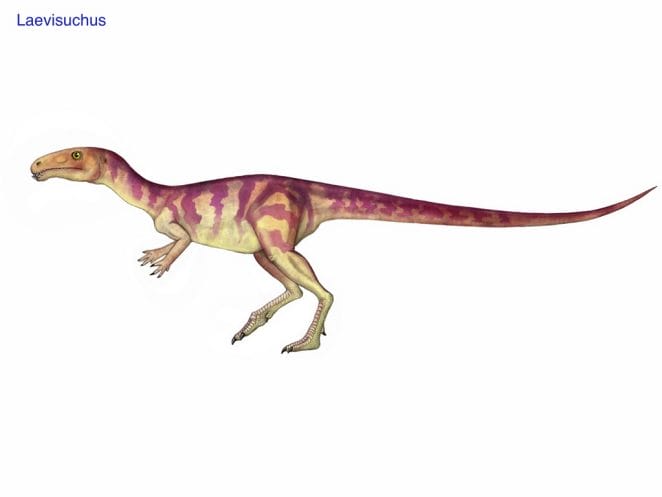Laevisuchus was a tiny carnivorous theropod with just three cervical vertebrae and one dorsal vertebrae known. The fossils were discovered in India’s Lameta Formation in 1933 by German palaeontologist Friedrich von Huene and his colleague Charles Alfred Matley.
Laevisuchus was categorised as a coelurosaur at first. Most palaeontologists now believe this dinosaur belonged to the Noasaurian family. The discovery resulted in the loss of two cervical and dorsal vertebrae; one cervical vertebra was rediscovered in 2012.
Let’s learn more about the Laevisuchus.
1: Laevisuchus quick facts:
Name: Laevisuchus (Greek for “Light Crocodile”); pronounced Lae-vi-suc-hus
When it lived: Late Cretaceous, 70 million years ago
Type of dinosaur: Small Theropod
Location: India
Habitat: Forest plains, near rivers.
Length/Weight: 2 meter/30kg
Diet: Carnivorous
Distinguishing Characteristics: Having two hind legs, two forearms, a small head, and a tail.
Named by: Huene & Matley (1933)
2: How do you pronounce ‘Laevisuchus’?
The name Laevisuchus should be pronounced “Lae-vi-suc-hus.”
3: What does the name Laevisuchus mean?
The name Laevisuchus, which means “light crocodile,” is derived from the Latin word laevis, which means “light,” and the Greek name for the ancient Egyptian crocodile god, Soukhos. The specific name translates to “Indian” in Latin.
4: What Did Laevisuchus Look Like?
Laevisuchus is regarded to be of the same family and class as Masiakasaurus, therefore it had two hind legs utilised for running, two forearms, a small head, and a short tail.

Laevisuchus was a tiny, bipedal, carnivorous dinosaur. In 1998, David Lambert calculated that it measured roughly two metres (6.6 ft) in length, 0.9 metres (3 ft) in height, and weighed approximately 30 kilogrammes (66 lb).
Sources:Wikipedia





GIPHY App Key not set. Please check settings